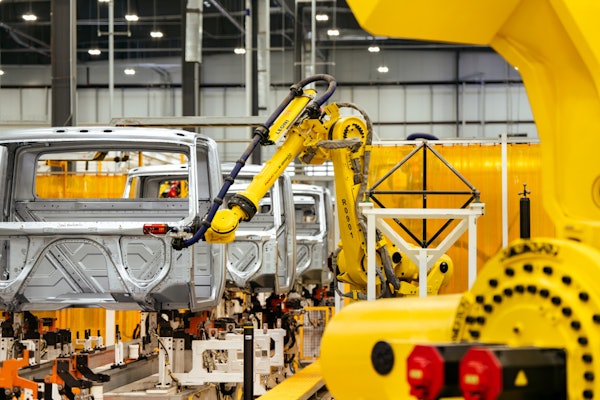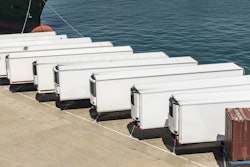New engine technologies and designs-brought to market for emissions compliance, improved performance or both-often mean new sets of inspection points and service requirements. The ever-increasing complexity of the engines means following these guidelines is more important than ever to ensure long engine life. And while all engine makers set recommended maintenance intervals, customer operating requirements also play a role.
Use service interval recommendations as starting points and modify them to fit customers’ specific needs.
“People rely on their experience, and although that is important, every new product has its own nuances,” said Greg Saele, engine marketing manager, International Truck And Engine Corp. “So it is wise to start with the manufacturer’s recommendation and then turn to your experience with what has worked on similar products in the past.” Engine maintenance often can be synchronized with chassis maintenance intervals to take the customer’s vehicle out of service less frequently.
“For instance, if the chassis maintenance interval is 1,000 to 2,000 miles lower than the engine maintenance interval, you might synchronize the two so that when the customer comes in for a regular A-level maintenance you can do everything at once,” Saele said. “We do not recommend going over the stated mileage for engine maintenance.”
The vehicle’s duty cycle also plays an important role in determining proper maintenance intervals. “The more fuel an engine uses, the more difficult the duty cycle is,” says Zack Ellison, Cummins manager, customer technical support, North America. “Engines that do more work need to have their oil changed earlier.”
Added Saele, “The harder a product works, the more often it will need to be serviced. What kind of fuel is being put in, what kind of environment it operates in and the frequency that the filters need to be changed, all affect maintenance intervals.”
The recommended oil change interval is every 15,000 miles for severe-duty cycles, 25,000 miles for normal-duty cycles and as high as 35,000 miles for vehicles in light-duty applications, Ellison said.
While most service intervals are based on miles driven, “in some cases it is more accurate to have service intervals based on hours of use or gallons of fuel consumed, because if a vehicle is doing a lot of idling, there is a lot of friction and that makes for a high-duty cycle,” Saele said.
Fuel economy is the primary factor in determining duty cycle: Severe duty is 5.5 mpg or less, normal-duty is 5.5 mpg to 6.5 mpg and light duty is anything over 6.5 mpg. Engines with better fuel economy actually do less work and do not use up the oil additives as quickly and so can have longer drain intervals, Ellison said.
Expand The Checklist
For optimum vehicle performance, following the basic service checklist-change the oil and filters, grease the chassis, inspect the brakes and check the differential and transmission oil-may not be enough, Ellison said. Technicians should also “perform a visual inspection on the cooling system and the air inlet system looking for anything that might be rubbing against the plumbing and for any clamps that might be loose or have seepage around them,” he added.
It’s also a good practice to check fluid levels and fluid condition, as well as look for signs of oil, coolant and fuel leaks, along with air leaks and exhaust leaks, Saele said. “They also should check for any worn parts and listen for unusual noises.”
Technicians also need to check the engine computer for any fault codes that might have registered, inspect the valve lash settings and make sure the valves are adjusted properly.
If the technician elects to change the air filter, he needs to be extremely careful not to let any dust from the old air cleaner get into the clean side of the air system. “Dust is the engine’s worst element for shortening life,” Ellison said.
Diesel engines use a tremendous amount of air; it only takes a few ounces of dirt to ruin one. “When dirt gets into the engine, it imbeds itself in either the ring face or the liner face. Then every time the ring passes that imbedded piece of dirt it cuts a little bit out of the ring or the liner and eventually you have high crankcase blow-by accompanied by high oil consumption,” Ellison said.
If the air cleaner has a rip or a tear or if there is a breach in the air cleaner element, the damage usually is irreversible. If there is a lot of air coming out of the draft tube, there is a problem in the engine.
To locate where the problem is, the technician needs to isolate the turbocharger because crankcase blow-by can come from different areas. Either the turbocharger or the air compressor can be leaking air into the crankcase, Ellison said.
“Once you isolate these two systems and you still have crankcase blow-by that is above the limit of approximately 18 inches of water, then the problem is in the rings or the cylinder liner,” he said. “If I had a technician doing A-level service on a vehicle, I would have him focus heavily on the air-intake system because just a little breach or problem in the system can completely wipe out the engine.”
Technicians should also inspect the cooling system and the fuel system, looking for points that might be rubbing and for any kind of leaks. “A little bit of a fluid weep will show up before there is a major problem,” Ellison said. This gives the technician a chance to repair or replace any parts while the vehicle already is in the shop.
Even with long-life coolant, it still is important to look at the coolant maker’s recommendations for testing and maintenance so that the coolant does not get acidic, which can lead to liner cavitation.
“Technicians need to do some mid-point testing to ensure the coolant still is doing its job,” Ellison said.
Customer Communication
Sometimes getting to the bottom of many problems can be as simple as asking the driver.
“The driver is going to see a problem before anyone else does and his input can give the technician a quick indicator that there is an area that needs some work,” Lou Wenzler, Cummins on-highway communications manager, said.
Saele recommended paying close attention to driver noise complaints. “Some fuel systems do a precycle of the fuel injectors before they start and also in some cases they will do a post cycle of different systems once the engine is shut off.
“By listening for what is going on, you can tell whether those systems are working properly. Also, any kind of unusual vibration or knocking is an indication that something is wrong.”
Perhaps the biggest thing you can do to help your customers keep their engines operating properly is to remind drivers to perform daily checks. “It is important that drivers routinely check the fluids because that is the first chance to head off a major problem,” Saele said.
What to expect with 2007 models
Engine maintenance procedures did not change for 2007 engines. However, inspecting the aftertreatment system for leaks at any of the joints between the turbocharger outlet and the diesel particulate filter (DPF) is important, says Zack Ellison, Cummins manager, customer technical support, North America.
“The aftertreatment devices on the new engines put a little more exhaust back pressure on the system, and joints that did not leak in the past may be more inclined to leak as a result of the higher back-pressure levels,” he explained. “It’s a good idea for technicians to look for loose clamps and joints so that the driver does not have to deal with odor in the cab.”
DPFs also will need to be cleaned at no less than 150,000 miles to remove ash that builds up as a result of the oil that the engine burns (see Oil Bay, page 18). Many engine manufacturers claim their required interval will be even longer.
Some manufacturers have added a crankcase ventilation filter to their engines. Cummins’ coalescing filter, for example, cleans up draft-tube emissions. It will need to be cleaned at 100,000 to 150,000 miles.
Perhaps the biggest difference with the 2007 engines is the need to use a new oil formulation and ultra-low sulfur diesel fuel. “It is important for technicians who have worked on older engines to know that the new engines, oil and fuels may not react the same way,” said Greg Saele, engine marketing manager, International Truck And Engine Corp.
“Our stated service intervals are the same,” he added, “but for people who extend the service intervals based on oil analysis, the new oils should be better in just about every way and the fuels should be cleaner. However, the new engines are going to run a little hotter and will be rough on fluids. Because so much is changing, you can’t assume that what you did in the past is going to work on the new engines.”
Saele also advised following up quickly on any driver complaints, fault codes or other signs of problems. “You may want to go after things a little faster than you did in the past because if there is something wrong with the engine it could have a downstream affect on the aftertreatment system.” And that’s an expensive proposition, he said.
No Smoke Signals
In the past many technicians have used the color of the exhaust to help diagnose engine problems. That may not be possible with newer engines, said Greg Saele, engine marketing manager, International Truck And Engine Corp.
“In the recent past, white or black smoke was an indicator that there might be something wrong,” he said. “With the new aftertreatment devices, a lot of that is going to be caught in the particulate filters so it is going to be more difficult to use smoke as a diagnostic tool.”








